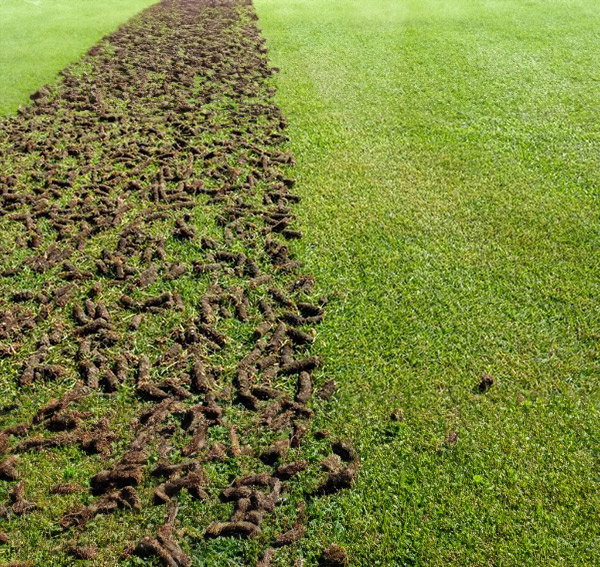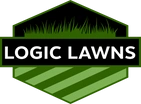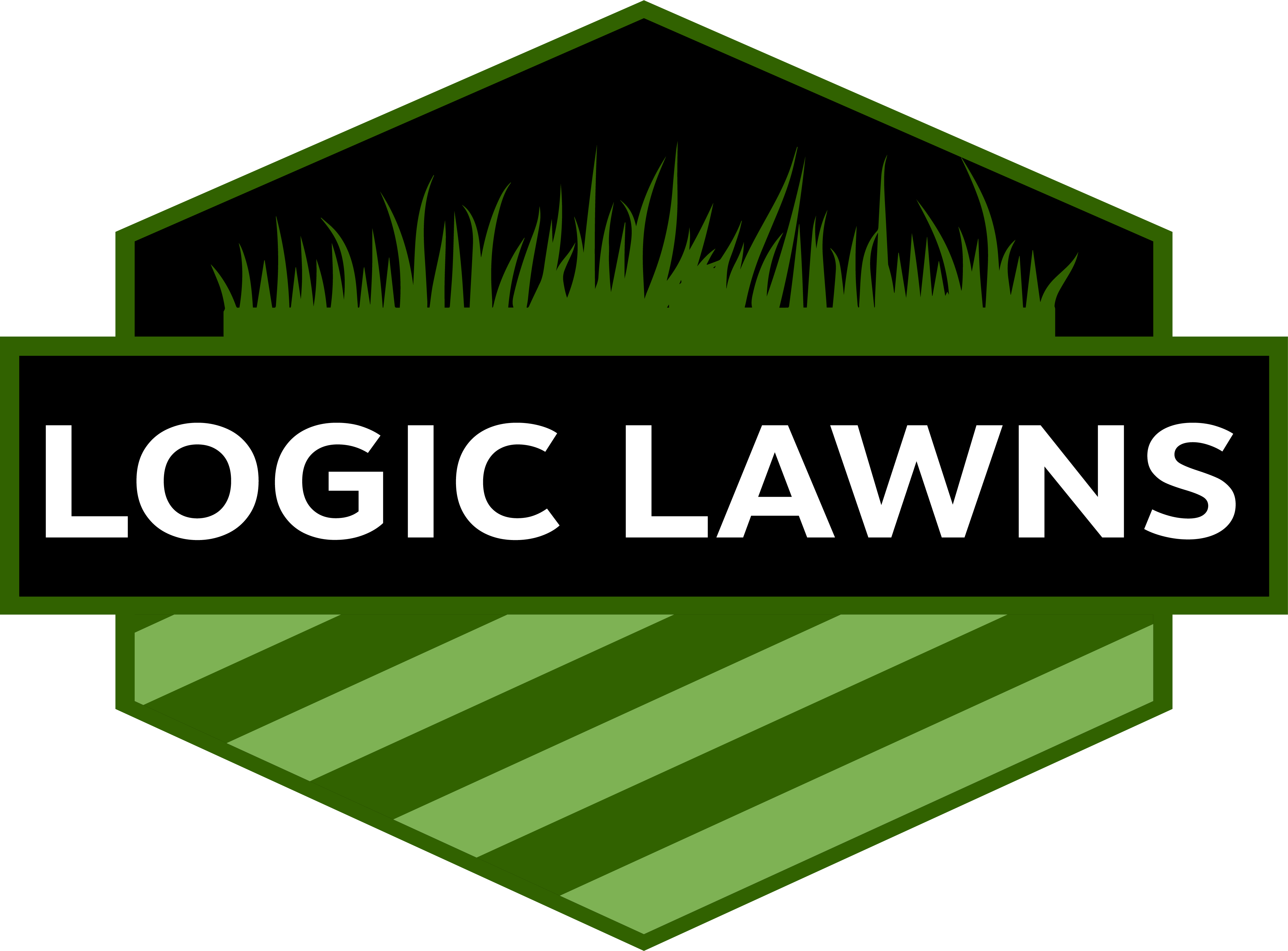Transform your yard with Logic Lawns expert services
Residential
Revitalize your lawn today with our expert mowing services, ensuring a lush and pristine yard that you’ll love coming home to.
Lawn Mowing
Mowing of all lawn areas once per week during the peak growing season. Mowing frequency and height may vary due to growing conditions. Includes clearing of paper, trash, and other debris.
- Edging where concrete meets the turf.
- Trimming turf around all vertical extrusions to the same height as the mowed turf.
- Clearing of grass clippings from paved surfaces and landscape beds after each mowing.
Lawn Fertilizing and Weed Control
- Applying pre-emergent crabgrass control in the spring.
- Fertilizing of all lawn areas in April, May, June, September, and October to maintain a vigorous, healthy green turf.
- Treating turf with a broadleaf herbicide according to its needs.
Irrigation
- Turn on water source, run through all zones and inspect for proper coverage and function. Note any malfunctioning parts and make repairs. (Note: All repairs will be billed separately on a time and material basis). Set the controller for adequate water supply based on the current weather conditions.
- Inspect turf and plants and adjust watering times as needed based on weather conditions.
- Winterize the system in the fall. Turn off the water supply, blow out system. Unplug controller.
Landscape Bed Management
- Beds and tree circles will be edged in the spring and an application of preemergent weed control will be applied. Beds will be kept in a weed free condition. This will be accomplished both manually and chemically.
- Pruning and trimming of plants regularly to contain their size with respect to species, size of planter or relative surroundings and in keeping with the best health of the plant.
- Debris will be removed from the site and disposed.
Lawn Aeration (once a year)
- Aeration is the process of removing plugs of soil to break up soil compaction, allowing oxygen and water to reach the root zone. These holes are small – only a few inches deep – and are typically made by simply piercing the ground, or removing small “plugs” of dirt. The treatment is key to stimulating root growth and encourages the penetration of air, water, and nutrients into the soil. It’s also key to removing and preventing thatch buildup.
Lawn Dethatching (once a year)
- Dethatching of the lawn with a machine.
- Removal of all dethatching material.
Spring Cleanup
Fall Cleanup
Commercial
Elevate your business with expert maintenance for a professional, inviting atmosphere that attracts customers.
Lawn Mowing
Mowing of all lawn areas once per week during the peak growing season. Mowing frequency and height may vary due to growing conditions. Includes clearing of paper, trash, and other debris.
- Edging where concrete meets the turf.
- Trimming turf around all vertical extrusions to the same height as the mowed turf.
- Clearing of grass clippings from paved surfaces and landscape beds after each mowing.
Lawn Fertilizing and Weed Control
- Applying pre-emergent crabgrass control in the spring.
- Fertilizing of all lawn areas in April, May, June, September, and October to maintain a vigorous, healthy green turf.
- Treating turf with a broadleaf herbicide according to its needs.
Irrigation
- Turn on water source, run through all zones and inspect for proper coverage and function. Note any malfunctioning parts and make repairs. (Note: All repairs will be billed separately on a time and material basis). Set the controller for adequate water supply based on the current weather conditions.
- Inspect turf and plants and adjust watering times as needed based on weather conditions.
- Winterize the system in the fall. Turn off the water supply, blow out system. Unplug controller.
Landscape Bed Management
- Beds and tree circles will be edged in the spring and an application of preemergent weed control will be applied. Beds will be kept in a weed free condition. This will be accomplished both manually and chemically.
- Pruning and trimming of plants regularly to contain their size with respect to species, size of planter or relative surroundings and in keeping with the best health of the plant.
- Debris will be removed from the site and disposed.
Lawn Aeration (once a year)
- Aeration is the process of removing plugs of soil to break up soil compaction, allowing oxygen and water to reach the root zone. These holes are small – only a few inches deep – and are typically made by simply piercing the ground, or removing small “plugs” of dirt. The treatment is key to stimulating root growth and encourages the penetration of air, water, and nutrients into the soil. It’s also key to removing and preventing thatch buildup.
Lawn Dethatching (once a year)
- Dethatching of the lawn with a machine.
- Removal of all dethatching material.
Spring Cleanup
Fall Cleanup
Trash Removal
Snow Removal
Highlighted service
Why is Aeration Important for my Lawn?

Aeration is probably the single best thing you can do for your lawn. Just like cleaning out your closet or coffee maker, aeration rids your lawn of unnecessary clutter and buildup. Here are four reasons why:
1. More Durable and Resistant to Foot Traffic
If you have a lawn, most likely you want to use your lawn. If you have kids or entertain often, your lawn might take a bit of a beating. That’s why aerating your lawn is so vital. When your lawn receives all the air, water, and nutrients it needs, it grows strong and is more durable. Just like when you eat all your veggies, you’re more likely to ward off colds and other illnesses.
2. Reduced Water Run off
Water run off is important to keep at bay, too much water can kill your lawn.
3. Improved Fertilizer Uptake
Your lawn needs nitrogen to thrive. It is primarily absorbed into the grass by its root system. Fertilizing your lawn helps increase the amount of nitrogen your lawn can absorb. The results of increased nitrogen are:
- Grass grows stronger and more resilient
- Grass grows faster
- Plays an important role in the production of chlorophyll, resulting in a greener
looking lawn
4. Helps Prevent Disease
When a human body is fed the wrong food, it eventually gets sick. The body doesn’t have the proper nutrients it needs to fight off disease. To stop being sick, the body is usually given medicine and hopefully more nutritious food to help it heal. The same goes for your lawn. When your lawn is prevented from receiving the proper nutrients, it becomes difficult for your lawn to fight off disease. This often happens when
layer after layer of sediment, soil layering, or thatch gets matted down year after year. Aerating your lawn acts like your medicine, going in and busting up spots where stagnation and disease have occurred and flushing it out. The result is a more resilient, better-looking lawn.
When should I get my lawn aerated?
The timing of your lawn aeration treatment depends on the type of grass you have. Cool-weather grasses such as Kentucky bluegrass, fine fescue, and ryegrass should be done when the weather begins to cool, during late summer and through the fall. Warm weather grasses should be aerated when the weather is warm, between late spring and summer.
At Logic Lawns, we recommend our customers in the Northern Idaho area aerate their lawns in the early spring or late fall. The combination of cooler weather and heavy rainfall makes this the perfect time to aerate a lawn. Additional benefits of fall aeration include: – Increase of lawn’s drought tolerance – Noticeable improvement in overall lawn health – Provides new seeds time to grow strong roots before next summer.
Get A Free Online Quote Today

